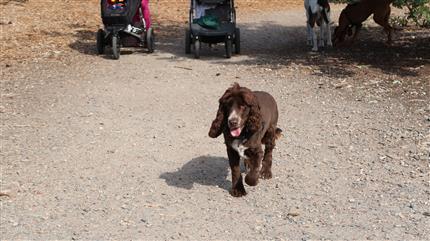
 “setters” group of dogs pros and cons for hunting.
“setters” group of dogs pros and cons for hunting.
The setter group of dogs is one of the most underestimated and misunderstood by regular dog lovers and even many hunters. Much of this is because many owners prefer dogs with many talents for hunting, and often focus more on the kill or the retrieve than the early part of the hunt mechanism.
The setter group of dogs is a very narrow definition, and these breeds live in the GUNDOG group. They are usually used in hunting birds such as quail and grouse. So they know how to keep quiet and sit for long hours with the human hunter.
The total gun dog group is generally agreed to comprise SETTER dogs and POINTER dogs
The setter group of dog comprise:
- English Setter
- French Spaniel
- Gordon Setter
- Irish Setter ( red setter)
- Irish White Setter
The prey behaviour sequence OR basically the functions that a dog does from the initial decision to get a prey animal to the actual kill is:
- 1 orient,
- 2 eye, stalk,
- 3 chase,
- 4 grab-bite,
- 5 kill-bite,
- 6 dissect
The gun dog (or setter in particular) are involved traditionally only in the FIRST of these activities the Orient (or finding where the bird is). Though many have evolved to ether chase and flush OR retrieve. They are typically not used for the chase or killing functions.
HOW do setter work in the hunt?
Like most dogs, the setters greatest sense is its nose. But unlike many others this ability is extreme in the setter dog. AND it is used when trained properly to analyze airborne scents of prey, not ground based scents like many tracking dogs like the bloodhound.
When trained properly the setter is very disciplined and hunts very methodically, analyzing, stopping thinking and choosing the best direction to continue a stealthy walk.
Here is the major difference with other GUN-DOGS (pointers). While the pointer will use airborne scents (using its head and nose in upward directions) when it decides it is close enough to the prey for the hunter to take over, the pointer POINTS with its body and / or paw in the direction or bird prey. The setter also freezes but instead of pointing takes a classic body stance that is a form of crouching lower – It is setting itself to show the bird is near.
Now a traditional hunter will use a flushing dog to flush the birds out, but sometimes setters and gun dogs can be trained and given permission to flush the birds out to be shot.
This might all sound simple, but the trick for many hunters is to get a dog that is very motivated, well trained and patient. Imagine having a carnivore dog just point or set at its dinner and rely on the human to finish the job. Imagine the patience in tracking, and the patience between hunts. How they learn to be quiet as they move through the scrub not giving the game away early – to birds that have attained themselves to fly away at the first sign of danger.
These dogs are still extensively used in England and places that they evolved but many Americans prefer a larger more robust killing machine that concentrates more on the end tasks of getting an animal. The other reason why this class has fallen out of favor is that it takes a lot of skill and patience to train these dogs. They just often aren’t part of the modern day time poor big game hunters arsenal.
The balance between excited and patience is critical. Its often like comparing a big game fisherman and his big boat and rig to a fly fisherman who prefers silence, patience and the game.